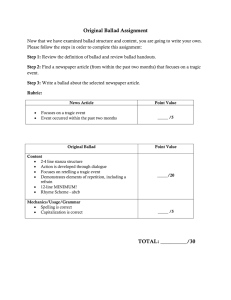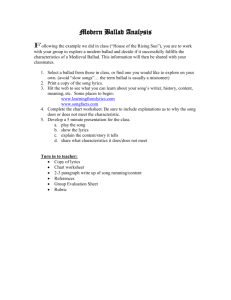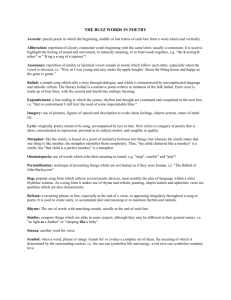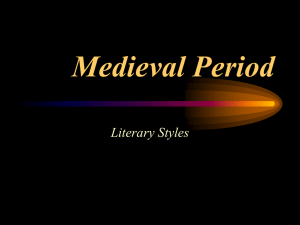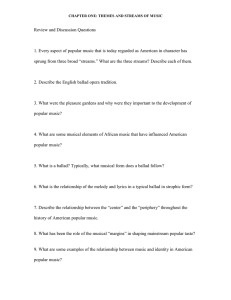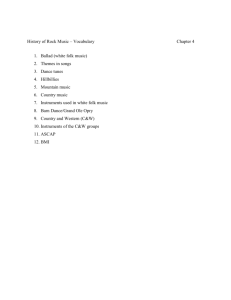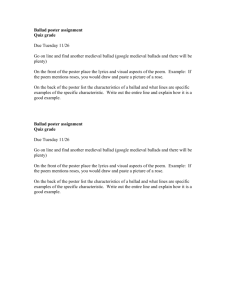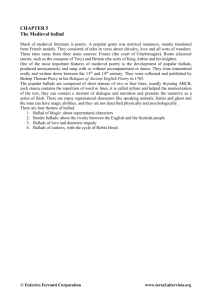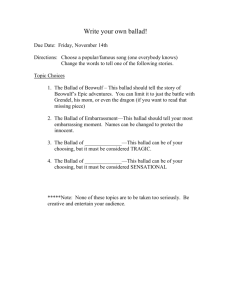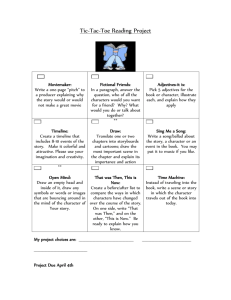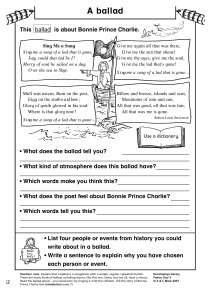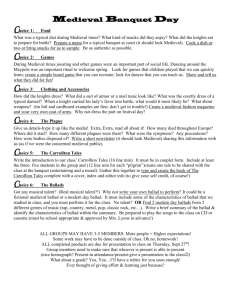Medieval Period
advertisement
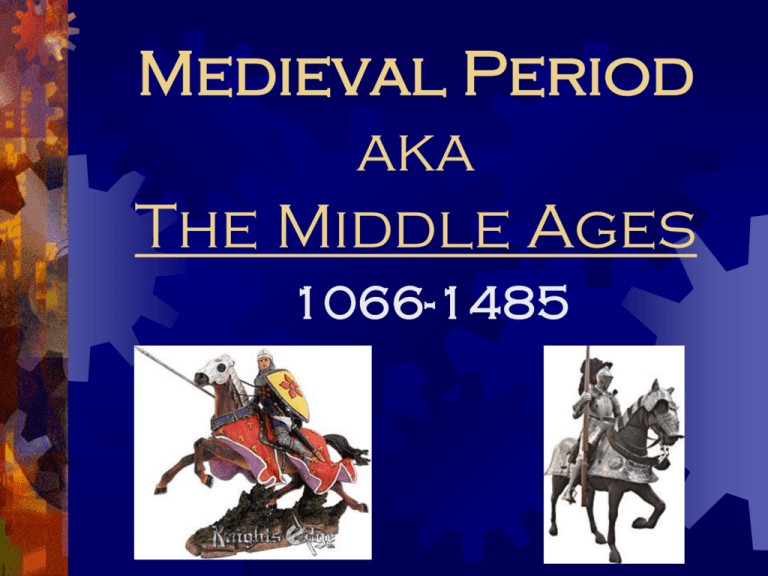
Medieval Period aka The Middle Ages 1066-1485 Historical Influences 1066-Norman Conquest 1154-End of Norman Rule 1215-King John signed the Magna Carta 1310-1410-Hundred Years War 1348-Black Death – the plague Revolt 1476-William Caxton-printing press 1455-1485-The War of Roses: House of York vs House of Lancasters 1380-Peasants’ Medieval Society Villages were the center of life Lords protected townspeople and granted property Merchants traded with other cities/towns Bakers, butchers, grocers, millers, smiths, carpenters, weavers, mason, shoemakers Peasants/Serfs worked the manors of the kingdoms, exchanged services for protection and substance (Some were free men) Peasants/Serfs Laboring Canterbury Cathedral Daily Living Trade grew as result of Crusades More communication and a spread of knowledge Development of guilds: craftsmen and merchants gained status Everyday living focused on agriculture/farming Many celebrations in town centered around performers (troubadours, acrobats, knights jousting, and merchants selling products) Love of Literature Books were treasured and kept protected in libraries Wandering scholars traveled during Crusades and learned new writing styles People interested in romantic writing & courtly love Only rich women were educated All knights must read/write Some went on to universities- (this lead to the Renaissance- spread of art, literature, human potential) Sociological Influences Christianity Roman Catholic Church united all of Western Europe Pervaded daily life and English society Faith replaced Fate Philosophical Influences Christianity King is the rule of God on earth Abuses in Catholic Church Code of Chivalry Honor, truth, courtesy both on and off the battlefield Types of Literature Ballad (recited or sung) Romance Short Story (frame story) Drama Ballad Characteristics Incremental repetition (repeat w/variation) Refrain (repeat in set pattern) Closure (last stanza resolves narration) Little attention to characterization or description Dialogue (usually colloquial) Ballad Form – usually quatrains (4 lines) Rhythm – 8 syllables line 1 & 3 6 syllables line 2 & 4 Form of verse to be sung or recited. Characterized by one simple, exciting episode in narrative form. Stanza Ballad Themes – domestic topics with common appeal Love Unrequited love/heartbreak Physical strength/Heroic deeds Current events Lost dreams Murderous acts/desire for revenge Jealous lovers Sir Patrick Spens Scottish Ballad http://www.youtube.com/watch?v=rT1r- smQkzQ Modern Ballads “November Rain”- Guns ‘N Roses “I Can’t Help Falling in Love”- UB40 “Wonderful Tonight” or “Layla”- Eric Clapton “When a Man Loves a Woman” “My Girl”- The Temptations “Every Breath You Take”- The Police “Hey Jude”- The Beatles “Your Song”- Elton John “American Pie”- Don McLean “I Don’t Want to Miss a Thing”- Aerosmith “Bohemian Rhapsody”- Queen Ballad Analysis 1. What is the theme of the ballad? 2. Summarize the story told in the song. 3. What is the refrain? What lines repeat? What effect does this have on the song? 4. 5. What is the conflict in the ballad if any? What truths about life are reflected in the story? Pair-Share! With a partner, make a list of THREE ballads. For each ballad, write a brief summary of the “theme” is the “refrain” in each song? (What lines are repeated?) What Briefly discuss the story within each of your songs. Is there a lesson or moral? Explain Medieval Romance A story that presents remote or imaginative incidents. Characteristics Supernatural elements (details involving wizards, potions, mystical interventions of strength, power, etc. Adventure (deeds of a hero who overcomes great obstacles for love, honor, or another ideal Themes Love – the reward that requires some accomplishment, or task to be completed to acquire the assurance of that love. Chivalry – behavior that includes virtues of bravery, honesty, demonstrated for the pleasure of a king or lady in the name of God. Drama Miracle/Mystery Play –taught Biblical stories Morality Plays- taught religious doctrine and emphasized moral struggles of everyday people Chaucer’s Frame Story Story – A brief work of fiction with a simple plot and setting that reveals a character at a crucial moment. Exemplum – A special entertaining anecdote (tale) that is intended to illustrate a truth or a moral. Short Chaucer’s Literary Contribution – The repetition of sounds at the end of words; specifically with Chaucer heroic couplets, two rhymed lines of iambic pentameter. Rhyme – Direct (when a writer explicitly states the character’s traits) Indirect (when a writer reveals traits by what a character thinks, says, does, describes) Characterization Chaucer’s Literary Contribution Story – a brief work of fiction with a simple plot and setting that reveals character at a crucial moment. Satire – Writing that ridicules or holds up to contempt the faults of individuals, groups, or institutions. Although usually humorous, its purpose is to correct the flaws and shortcomings it illuminates. Short
